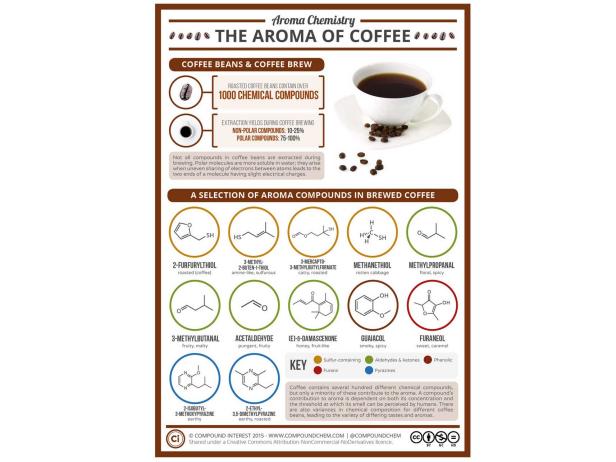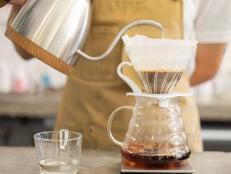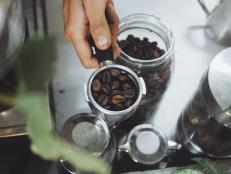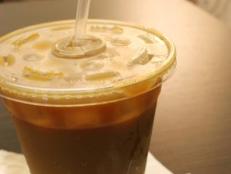What Makes Coffee Smell So Good? An Infographic Makes Scents of It

Mmmm … the aroma of coffee. Even some people who don’t drink it enjoy coffee’s heady scent. And those of us who are coffee drinkers may respond to the smell of a freshly brewed pot with a love that can be embarrassing in its fervor.
Why do we adore it so? Past research has indicated that just the smell of coffee sends a wake-up call to the brain and reduces the stress of sleep deprivation, and now there’s an infographic that parses the chemistry of coffee’s aromatic appeal.
“There are a number of different ways in which coffee’s aroma compounds are created,” Compound Interest, the chemistry blog that created the infographic, explains. It adds that the Maillard reaction, a chemical reaction between amino acids and sugars that makes browned foods like seared steak so delicious, “is a big contributor here, the reaction between proteins and sugars in the coffee beans producing a range of products.” What’s more, the site notes, “degradation and decomposition of other compounds in the coffee beans can also produce aroma compounds.” Brewing also plays a role.
But as for the aromatic chemicals themselves, Compound Interest lays it out thusly, "A number of families of compounds are significant contributors to coffee’s aroma. Several sulfur-containing compounds are of importance, including 2-furfurylthiol, with an aroma that on its own is actually commonly described as ‘roasted coffee’. There are also some compounds which on their own might smell pretty unpleasant, but in chorus with the other compounds add nuances to the aroma; for example methanethiol, which has a smell described as like that of rotten cabbage, and which is also a significant contributor to the smell of flatulence. Another sulfur-containing compound, 3-mercapto-3-methylbutyl formate, is brilliantly described as having a ‘catty’ odour in isolation."
Um … ew? But it gets a bit better. "Other contributing families of compounds in [coffee] include aldehydes, which generally add a fruity, green aroma, furans, which contribute caramel-like odours, and pyrazines, which have an earthy scent. Guaiacol and related phenolic compounds offer smoky, spicy tones, and pyrroles and thiophenes are also present in low concentrations," Compound Interest explains.
Very interesting. But I think I might need another cup of coffee before I can totally wrap my head around it.


























































